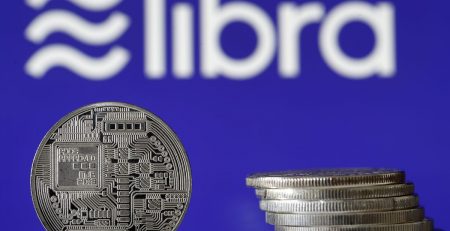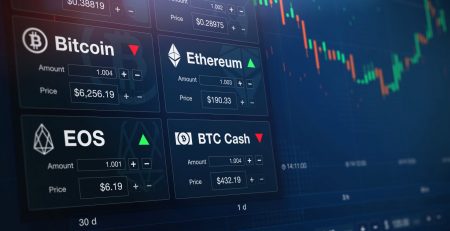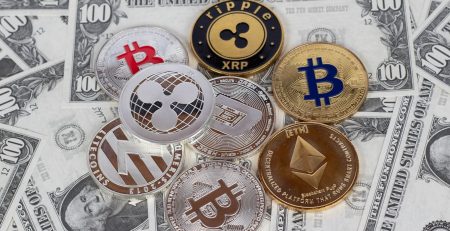Why did Cryptocurrencies come into being and why do we need them?
Jonas Bostoen is a tech blogger. In a recent article, he reviewed the historical process of money until its digitalization and explained in simple language why we need decentralized cryptocurrencies. You can read this article below.
I was recently asked why I buy bitcoin and why I think it is a good investment. To answer this question, I have prepared a two-part article. In the first part I will explain how Cryptocurrencies got here. In the second part, I will tell you why I think some of them are a good investment option
Part One: From Seed to Coin

Definition of money: Anything that can be exchanged for goods and services and also be used as a yardstick for valuing them.
To better understand the meaning of money, we must go back to 7,000 years ago, that is, 5,000 BC; When the total human population was about 40 million. At that time, barter was common. Exchanging is like trading; You exchange your goods and services for other goods and services you need. If a corn farmer needs pork, he tries to deal with a pork breeder or seller and offer his own corn in exchange for the meat he receives. The problem is that it is difficult to agree on the amount of corn or pork in such transactions, as no specific price or exchange rate has been set. Another problem is the unwillingness of one of the parties to trade in another commodity; For example, if a pig farmer does not need the farmer’s corn, the farmer will not actually get the meat he needs.
Therefore, we need something that has value and that the pig breeder is eager to get. Many cultures around the world began to use a tool called “commodity money”. Commodity money is actually objects that have a practical value and can be used as an exchange intermediary. For example, think of seeds, salt, or tobacco. Farmers agreed to use these goods as a method of payment. Instead of using barter, farmers provided the goods they needed by offering commodity money, and on the other side of the transaction, the seller could use this commodity money to buy whatever he wanted. In this way, we solved the problem of the buyer’s unwillingness to receive the goods offered (such as corn) by the buyer. The corn farmer can give the pig farmer a specified amount of seed to get the pork he needs. But there was another problem with using commodity money: Most of this commodity money was perishable, making it difficult for the seller or the buyer to store it. In addition, these currencies did not maintain their value well. On the other hand, it was also very difficult to match the value of different goods and services with commodity money.
When different societies faced these challenges, metal objects were first used as money. Metals benefit from positive properties such as high durability, easy divisibility, easy portability and.. However, since it was difficult to determine the value of a piece of metal (such as crude gold), ancient societies took a step forward. About 700 BC, the Lydians were the first people in the world to make standard coins. After this, other countries of the world also issued their own coins with the specified value. Thus, once the value of each coin was known, it was now easy to compare the value of goods and services. Since Lydia was the first people to create a common currency, the development of trade for them progressed very quickly and they soon became one of the richest empires in Asia Minor. The English proverb “Rich as Croesus” actually refers to the last Lydian king to mint the world’s first gold coin

The value of these coins was very high at first. Precious and very pure metals such as gold or silver were often used to mint these coins. But over time, other societies around the world used cheap metals to mint coins. At the same time, they kept the face value of the coins high. Although these new coins were not inherently valuable gold coins, they were considered valuable given the numbers on them.
In the 11th century, China took paper development to a new level with the introduction of paper money. It was now even easier to compare the value of goods and services with the available currency. Paper had no value per se, but represented a specified value. Now we have something called “representative money”. Of course, the evolution of money did not happen in the same way in all parts of the world. Europeans, for example, continued to use coins until the 16th century. But with the simplification of calculating the value and transactions that paper money brought with it, many parts of the world soon began to use this type of money. In a short time, however, not only did other parts of the world adapt to the concept of paper money, but they also developed better paper money by making the necessary improvements. So the slogans on the Chinese banknotes that “forgers will be beheaded.” Was to “believe in God.” Changed on the US dollar scan

The representative’s money was backed by gold in the banks, and very soon governments promised that people could use it to buy certain amounts of gold or silver. For example, people could receive a pound (about 0.5 kg) of sterling silver with an old British pound banknote. For most of the nineteenth and early twentieth centuries, most currencies were representative of value, and their value was based on the gold standard.
In today’s modern world, currencies are no longer backed by gold. In 1971, then-President Richard Nixon separated the US dollar from gold, and it soon happened in other parts of the world. Currently, the value of a common currency depends on government supply and public demand. Money as we know it is in fact a social agreement that is no longer backed by objects (such as precious metals) or commodities (such as seeds and tobacco), and instead its value is determined by the government. Thus, we now live in the age of Fiat money.
Part II: Money and its functions

In the previous section, I mentioned a few key terms. Below you can see three functions of money:
- Save value
- A method of payment
- Unit of measurement of value
Let’s look at the US dollar as an example. In the first place, this currency gives you the ability to store value, because you are almost certain that its value will not decrease significantly over time. In the case of Fiat money, that confidence will actually depend on how much public trust in the government. The Venezuelan Bolivar, which experienced inflation of more than, 350,000 in 2019, is a clear example of the failure of a Fiat currency to maintain value. The method of payment is also quite clear; The US dollar can be used to buy a variety of goods and services, as the parties to the transaction around the world have agreed on its value. Finally, the unit of value is another important function that allows people in the community to price their goods and services according to the value of the US dollar.
Part III: Digitization

Software is conquering the world, and that includes money. Most financial transactions today are done digitally. In 2019, e-commerce had sales of $ 3.53 trillion. The problem with digital payments is that intermediaries (and, of course, need trust) monitor all payments. This means that the intermediary organization has the ability to monitor your financial activities, prevent transactions or reverse them. Even in the worst case scenario, it is possible for the organization to confiscate your funds. This is the biggest problem of concentration.
This makes a big difference to cash; Physical cash is transferred on a peer-to-peer, private and non-refundable basis. Of course, even if you use cash, you still have to trust your government. In fact, it is the government that, as the main backbone of money, should not allow its value to decline or inflate over time. The problem with cash is that you have to be in the same country where the money is exchanged to exchange it. Although some people were well aware of the need for e-money and peer-to-peer, unfortunately almost all efforts in this area had failed. But during the economic crisis of late 2008, an article entitled “Bitcoin: A Peer-to-Peer Electronic Money System” was published by an anonymous person nicknamed Satoshi Nakamoto.
Vijay Boyapati wrote in an article on The Bullish Case for Bitcoin:
The implications of the rise of bitcoin are profound, both economically and in computer science, and for this reason Nakamoto is eligible to be the first winner of the Nobel Prize in Economics as well as the Turing Prize.
Part IV: The Rise of Cryptocurrencies

Bitcoin was the first project to solve all the problems faced by other digital money projects. Spending twice (spending money in two different places) was one of the biggest problems. With the advent of bitcoin, many other projects followed this cryptocurrency, and in fact bitcoin gave rise to many different cryptocurrencies. Most Cryptocurrencies are based on Blockchain. Blockchain is an advanced technology that brings the following four important and revolutionary features to all these Cryptocurrencies:
- Being independent and decentralized
- Open source and transparency
- Resistant to censorship
- Peer-to-peer and essentially private
This means that people can move capital without the need for oversight and certification by intermediary organizations, as well as concerns about a country’s borders. Therefore, the costs of capital transfer are relatively low and there is no intermediary organization that has a share (commission) in this transfer. The only fee you pay is for the network, which is responsible for verifying your transactions.
With Cryptocurrencies, businesses no longer face restrictions on banks or payment processing companies in their payments, as there are virtually no such intermediaries. Everything happens in an inclusive network, where you do not need to provide personal information, disclose financial information or pay extra to use these services; All you need is an internet-connected device.
It is good to know that around 2 billion adults around the world do not have any bank accounts. For this reason, these people have to pay heavy fees to companies such as the Western Union for their financial transfers between different countries. Cryptocurrencies solve this problem completely, especially these days when buying a smartphone is much easier than opening a bank account.
People who believe in cryptocurrencies say that these types of currencies can easily be the next step in the evolution of the concept of money. For the first time, we have a currency that has not been issued by any government or bank and is based solely on computer code and cryptographic technology. Experts believe that by removing humans from financial processes, the possibility of corruption and unwanted mistakes will be reduced to zero. Whether you already believe in Cryptocurrencies or not, I hope this article provides enough information to better understand the benefits of this type of currency.
Why did Cryptocurrencies come into being and why do we need them?












Leave a Reply